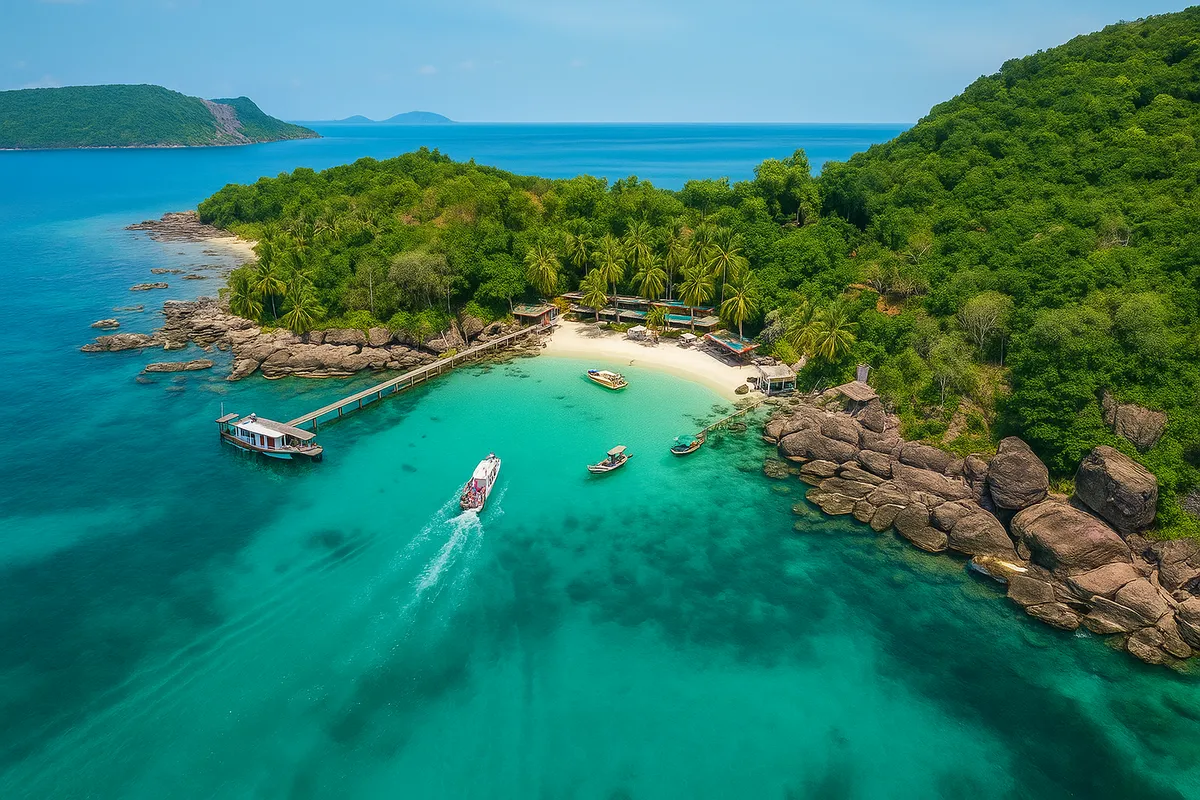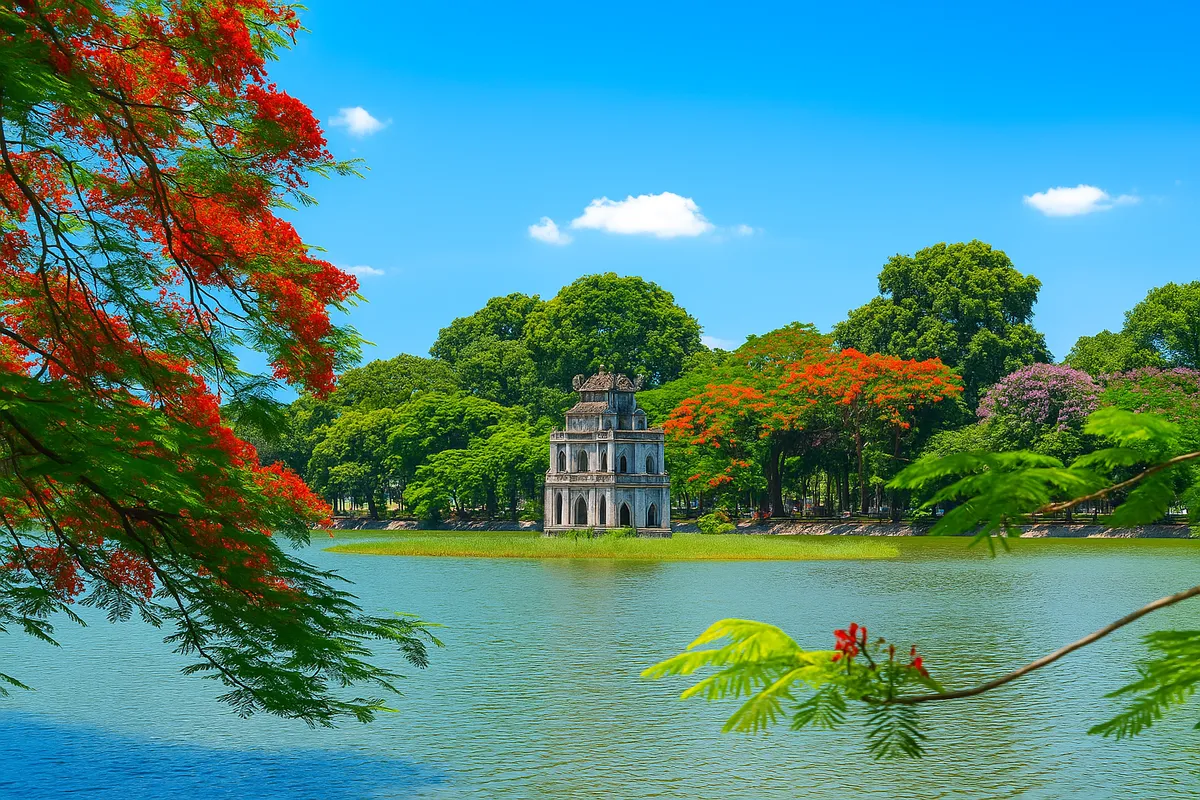Phu Quoc travel experience for connoisseurs
- Monday, Jun 09, 2025, 20:42 (GMT+7)
Phu Quoc travel experience for connoisseurs
Phu Quoc, Vietnam's largest island, is not just a destination known for its stunning beaches but a mosaic of multi-dimensional travel stories. Yet to avoid the beaten path and sidestep the repetitive promotional tones found online, a truly rewarding journey requires more than a standard itinerary. What travelers need is a travel plan rich in experience, optimized for time, cost-effective, and sharp enough to avoid the quiet traps often hidden in a rapidly evolving tourism industry.
Air travel remains the most time-efficient way to reach Phu Quoc. More than 20 direct flight routes connect the island with major domestic and international cities. However, airfares fluctuate widely depending on the season, ranging from under one million VND to nearly three million VND for a one-way ticket during peak periods. A useful tip is to book tickets about two months in advance, avoid weekend departures, and choose early morning or late-night flights for better prices. For travelers departing from Ho Chi Minh City or Rach Gia, high-speed ferries are available, taking about two to three hours. Although more affordable, this method depends heavily on weather and can be uncomfortable for those prone to seasickness. Another option popular among motorbike adventurers is riding through the Mekong Delta to Ha Tien and bringing their bike onboard the ferry for maximum freedom once on the island.
Phu Quoc’s culinary scene reflects its maritime roots and a rare fusion of regional cultures. Dishes like fresh herring salad dipped in garlic-chili fish sauce balance sweetness, spice, and richness from roasted peanuts and shredded coconut. Another must-try is “Bun Quay” at Kien Xay, where diners mix their own dipping sauce and eat the noodles immediately after being cooked, preserving their subtle flavors. A local favorite is Ut Luom’s “Bun Ken,” a coconut-based fish noodle dish that offers a unique taste experience. For seafood lovers, Dinh Cau Night Market or Ham Ninh Market offer diverse options. To identify quality spots, watch where locals dine and avoid places that employ aggressive sales tactics or lack transparent pricing. A practical trick is to check Google Maps reviews sorted by latest, not just rating.
Accommodation in Phu Quoc has grown impressively, but choosing where to stay depends on the type of experience one seeks. Duong Dong Town, the island’s center, is convenient for short stays and offers plenty of dining and service options, ideal for those traveling by motorbike. For a more tranquil stay, beachfront resorts along Bai Truong or Bai Sao offer exclusive seaside access, often with private beaches, priced between two to five million VND per night depending on the season. Bungalow-style homestays in Ganh Dau or Rach Vem appeal to nature lovers seeking quiet and simplicity. Recently, beach camping has gained traction, especially in remote areas like Mui Ong Doi or Bai Vong. Travelers considering off-grid experiences should check for security, restroom availability, and proximity to gas stations or clinics.
Activities on the island go far beyond sunbathing and night markets. Many first-time visitors regret missing out on coral snorkeling at Hon Mong Tay or scuba diving with oxygen tanks at Hon Dam Ngang. During dry season, visibility reaches up to 15 meters, making it ideal for underwater photography and reef observation. Phu Quoc is also home to traditional craft villages specializing in fish sauce, pepper, and sim wine production. Visitors can tour local workshops such as Khai Hoan or Hong Duc for free, often with tasting included. On days of harsh sun or heavy rain, exploring the Phu Quoc Prison Museum offers a haunting yet educational insight into wartime history, with exhibits like the infamous tiger cages representing the brutality of colonial imprisonment.
Phu Quoc's most Instagram-worthy photos are not limited to beaches. Sunset at An Thoi pier, leaning coconut trees on Bai Sao, or palm-lined beaches at Sunset Sanato all offer prime photo opportunities. The best lighting is typically between 5:30 to 7:00 AM and 4:30 to 6:00 PM, when the sun casts a gentle golden hue without creating harsh shadows. For those chasing deeper imagery, the Phu Quoc National Park or sunrise on Hon May Rut are recommended. However, lesser-known spots like Bai Thom or Rach Tram, while beautiful, have poor road conditions, so plan accordingly and avoid rainy days.
Despite its beauty, traveling to Phu Quoc without preparation can bring unnecessary trouble. One common mistake is booking cheap accommodations without checking location, resulting in expensive transport costs later. Use satellite maps to verify actual distances to attractions. When renting a motorbike, take clear photos of the vehicle beforehand to avoid disputes over existing scratches. During holidays, inflated prices are common in crowded tourist areas. To avoid overpaying, use QR payment methods for transparency and always request receipts. Be cautious of overly cheap tours, which may lack quality or force guests into uncomfortable group schedules. An often overlooked issue is the high presence of sea bugs during the rainy season, so pack antihistamines and check clothes or towels left outdoors overnight.
Though Phu Quoc is a well-known destination, hidden gems still exist for those willing to seek. Behind the structured tour packages are quiet beaches, peaceful villages, and genuinely warm locals. A fulfilling trip is not about how many landmarks are checked off a list, but how well time, budget, emotions, and understanding are balanced. In Phu Quoc, even the most familiar scenes can become extraordinary if one observes closely, asks the right people, and chooses to slow down.

 CHECKIN.VN
CHECKIN.VN








Share on